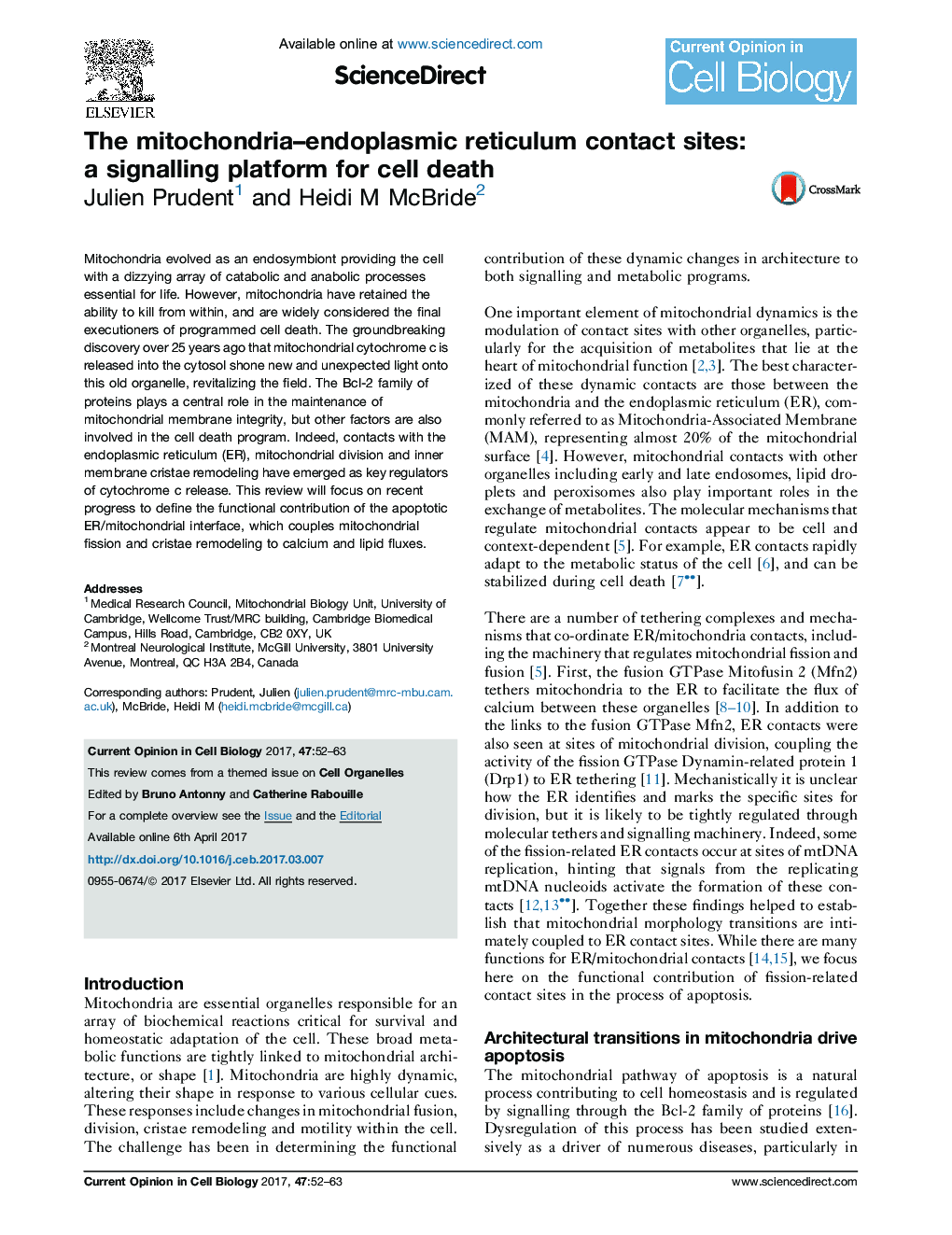| Article ID | Journal | Published Year | Pages | File Type |
|---|---|---|---|---|
| 5531109 | Current Opinion in Cell Biology | 2017 | 12 Pages |
â¢Drp1-SUMOylation stabilizes the ER/mitochondrial interface required for apoptosis.â¢This ER/mitochondrial platform facilitates calcium and lipid fluxes during cell death.â¢Drp1 and mitochondrial fragmentation are crucial for cristae remodeling during apoptosis.â¢OPA1-oligomer cleavage and cristae remodeling are Ca2+-dependent.
Mitochondria evolved as an endosymbiont providing the cell with a dizzying array of catabolic and anabolic processes essential for life. However, mitochondria have retained the ability to kill from within, and are widely considered the final executioners of programmed cell death. The groundbreaking discovery over 25 years ago that mitochondrial cytochrome c is released into the cytosol shone new and unexpected light onto this old organelle, revitalizing the field. The Bcl-2 family of proteins plays a central role in the maintenance of mitochondrial membrane integrity, but other factors are also involved in the cell death program. Indeed, contacts with the endoplasmic reticulum (ER), mitochondrial division and inner membrane cristae remodeling have emerged as key regulators of cytochrome c release. This review will focus on recent progress to define the functional contribution of the apoptotic ER/mitochondrial interface, which couples mitochondrial fission and cristae remodeling to calcium and lipid fluxes.
